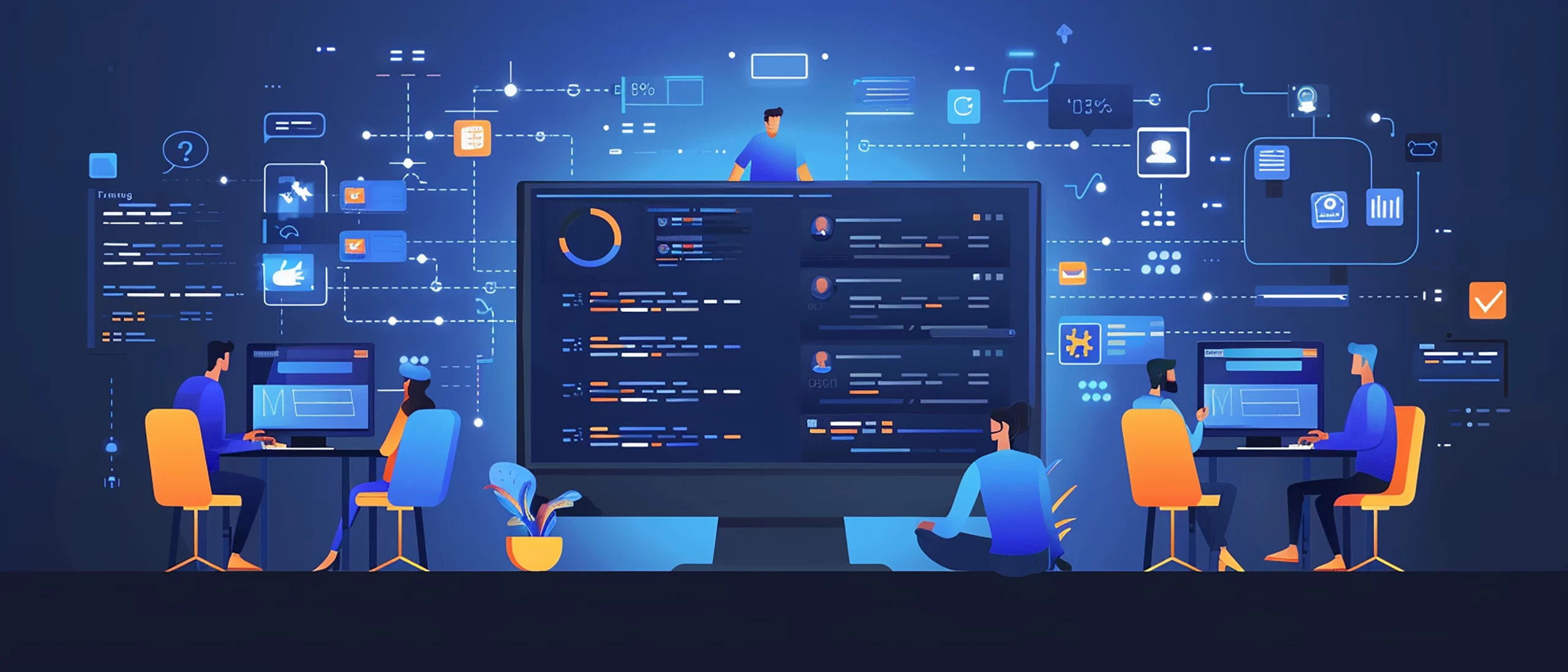How Software Development Methodologies Have Evolved Over Time?
Author: Inza Khan
12 August, 2024
Software development methodologies have undergone a significant transformation over the past few decades. As the demands of the market and the complexity of software projects have increased, so too have the approaches to managing these projects evolved. This blog post will take you on a journey through the history of software development methodologies, exploring how we’ve progressed from rigid, linear approaches to more flexible and collaborative methods.

The Waterfall Model: The Beginning of Structured Development
The Waterfall model, introduced in the 1970s, marked the beginning of structured software developments. This linear sequential approach borrowed from industries like manufacturing and construction, featuring distinct phases such as requirements gathering, design, implementation, verification, and maintenance. Each phase had to be completed before moving to the next, emphasizing thorough planning and documentation. While the Waterfall model provided clear structure and milestones, its inflexibility to changing requirements and late delivery of working software led to the exploration of more adaptive methodologies.
The Rise of Iterative and Incremental Development
As the limitations of the Waterfall model became apparent, developers began exploring more flexible approaches in the 1980s and 1990s. Notable methodologies like the Spiral Model, Rapid Application Development (RAD), and the Unified Process (UP) emerged during this period. These approaches introduced concepts such as risk analysis, prototyping, and frequent releases, allowing for more adaptability in the development process. By combining elements of the Waterfall approach with iterative development, these methodologies aimed to address the rigidity of their predecessor while maintaining a structured approach to software creation.
The Agile Revolution
The turn of the millennium saw a shift with the introduction of Agile methodologies, formalized in the Agile Manifesto of 2001. Agile emphasized individuals and interactions, working software, customer collaboration, and responding to change. Popular frameworks like Scrum, Extreme Programming (XP), and Kanban gained traction, each offering unique approaches to iterative development, continuous feedback, and close collaboration between developers and stakeholders. These methodologies enabled teams to respond quickly to changing requirements and deliver value to customers more frequently, marking a significant departure from earlier, more rigid approaches.
Lean Software Development
Inspired by lean manufacturing principles, Lean Software Development emerged as an adaptation of Agile practices in the early 2000s. Popularized by Mary and Tom Poppendieck, Lean emphasizes eliminating waste, amplifying learning, deciding as late as possible, delivering quickly, empowering the team, building integrity in, and optimizing the whole. These principles further refined the software development process, focusing on efficiency and value creation throughout the entire development lifecycle. Lean thinking has been incorporated into many Agile practices, helping teams identify bottlenecks and improve overall productivity.
The DevOps Movement
As Agile methodologies matured, the DevOps movement emerged in the late 2000s to address the gap between development and operations teams. DevOps practices aim to reduce the time between writing code and deploying it to production, allowing for faster iteration and more reliable software releases. Key principles include Continuous Integration and Continuous Delivery (CI/CD), Infrastructure as Code, automated testing and deployment, comprehensive monitoring and logging, and enhanced collaboration between development and operations teams. By breaking down silos and promoting shared responsibility, DevOps has significantly improved the speed and reliability of software delivery.
Emerging Trends and Future Directions
As we look to the future, several trends are shaping the evolution of software development methodologies:
AI-Assisted Development: Machine learning and AI are being integrated into development tools, helping with code generation, bug detection, and optimization.
Low-Code/No-Code Platforms: These platforms are democratizing software development, allowing non-developers to create applications with minimal coding.
Microservices and Serverless Architecture: These architectural patterns are changing how applications are built and deployed, emphasizing scalability and modularity.
Value Stream Management: This approach focuses on optimizing the entire software delivery process to maximize business value.
DataOps and MLOps: Extensions of DevOps principles to data analytics and machine learning operations, respectively.
Green Software Engineering: A growing focus on developing software that is environmentally sustainable and energy efficient.
Conclusion
The evolution of software development methodologies reflects the industry’s quest for efficiency, quality, and adaptability. From the structured Waterfall model to the iterative Agile approaches and the automated DevOps practices, each methodology builds on the lessons of its predecessors.
At Xorbix Technologies, we stay ahead of these trends to offer tailored solutions that meet your project needs. Whether you’re adopting Agile, implementing DevOps, or exploring AI in development, our experts provide guidance and services to help you succeed.
Read more on related topics:




